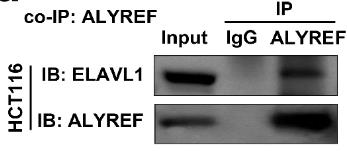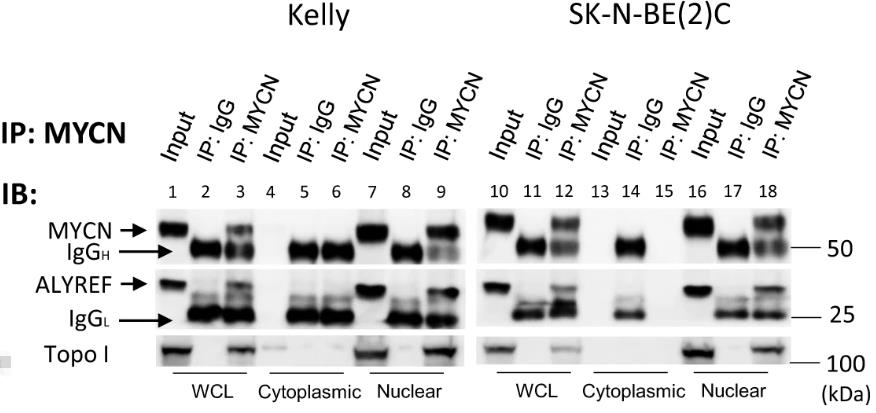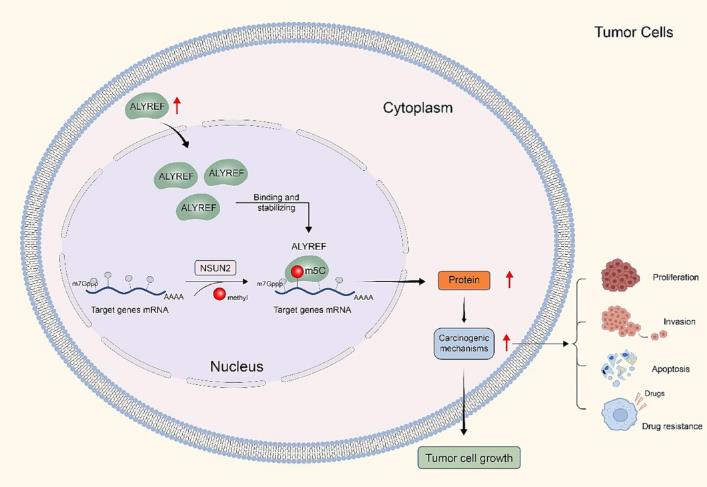Recombinant Human ALYREF Protein(11-250aa), His-tagged
| Cat.No. : | ALYREF-9606H |
| Product Overview : | Recombinant Human ALYREF Protein(11-250aa)(Q86V81), fused with C-terminal His tag, was expressed in E. coli. |
| Availability | April 20, 2025 |
| Unit | |
| Price | |
| Qty |
- Specification
- Gene Information
- Related Products
- Case Study
- Application
- Download
| Species : | Human |
| Source : | E.coli |
| Tag : | His |
| Protein Length : | 11-250aa |
| Form : | 0.15 M Phosphate buffered saline. |
| AA Sequence : | DIIKLNRSQRGGRGGGRGRGRAGSQGGRGGGAQAAARVNRGGGPIRNRPAIARGAAGGGGRNRPAPYSRPKQLPDKWQHDLFDSGFGGGAGVETGGKLLVSNLDFGVSDADIQELFAEFGTLKKAAVHYDRSGRSLGTADVHFERKADALKAMKQYNGVPLDGRPMNIQLVTSQIDAQRRPAQSVNRGGMTRNRGAGGFGGGGGTRRGTRGGARGRGRGAGRNSKQQLSAEELDAQLDAY |
| Storage : | Store at -20°C/-80°C upon receipt, aliquoting is necessary for mutiple use. Avoid repeated freeze-thaw cycles. |
| Reconstitution : | It is recommended that sterile water be added to the vial to prepare a stock solution of 0.2 ug/ul. Centrifuge the vial at 4°C before opening to recover the entire contents. |
| Gene Name | ALYREF Aly/REF export factor [ Homo sapiens ] |
| Official Symbol | ALYREF |
| Synonyms | Aly/REF export factor; Ally of AML-1 and LEF-1; ALY; Transcriptional coactivator Aly/REF; BEF; bZIP-enhancing factor BEF; THOC4; bZIP enhancing factor; ALY/REF; THO complex subunit 4; REF; tho4; THO complex 4; Tho4 |
| Gene ID | 10189 |
| mRNA Refseq | NM_005782 |
| Protein Refseq | NP_005773 |
| MIM | 604171 |
| UniProt ID | Q86V81 |
| ◆ Recombinant Proteins | ||
| ALYREF-9607H | Recombinant Human ALYREF Protein(11-250aa), MBP&His-tagged | +Inquiry |
| ALYREF-1584M | Recombinant Mouse ALYREF Protein | +Inquiry |
| ALYREF-9606H | Recombinant Human ALYREF Protein(11-250aa), His-tagged | +Inquiry |
| ALYREF-512H | Recombinant Human ALYREF protein, GST-tagged | +Inquiry |
| ALYREF-5987Z | Recombinant Zebrafish ALYREF | +Inquiry |
Case 1: Zhong L, et al. NPJ Precis Oncol. 2024
ALYREF is capable of recognizing 5-methylcytosine (m5C) modifications on RNAs, influencing RNA metabolism. Despite this, its involvement in cancer and the exact regulatory pathways remain largely undefined. In this study, researchers discovered that ALYREF facilitates the growth and migration of colorectal cancer (CRC). Through integrated analyses, they identified ribosomal protein S6 kinase B2 (RPS6KB2) and mTOR regulatory-associated protein (RPTOR) as potential downstream targets of ALYREF. ALYREF collaborates with ELAV-like RNA binding protein 1 (ELAVL1) to enhance m5C detection and the nuclear export of these mRNAs. Furthermore, elevated levels of ALYREF were observed in the tumor tissues of CRC patients, which correlated with a poor prognosis. Transactivation by E2F transcription factor 6 (E2F6) provided a mechanistic understanding of ALYREF's overexpression.

Fig1. Biotin-labeled RNA probes against full-length CDS, their antisense sequences and fragments were subjected to RNA pull-down assays.

Fig2. Endogenous co-IP assays were conducted with protein A/G magnetic beads to capture primary antibodies against ALYREF.
Case 2: Nagy Z, et al. Nat Commun. 2021
In the context of neuroblastoma, cancer cells exploit the ubiquitin proteasome system to elevate transcription factor levels, which is essential for maintaining the malignant state. The research highlights ALYREF as a crucial influencer of MYCN protein stability. This relationship stems from the common genetic gain at chromosome 17q21-ter observed in neuroblastoma. Both in vitro and in vivo transgenic neuroblastoma models reveal a significant interaction between ALYREF and MYCN, forming a nuclear coactivator complex that enhances the transcription of ubiquitin-specific peptidase 3 (USP3). This upregulation of USP3 decreases K-48- and K-63-linked ubiquitination of MYCN, leading to increased stability of the MYCN protein. In this MYCN-ALYREF-USP3 pathway, ALYREF is indispensable for MYCN's influence on malignancy and for USP3's role in stabilizing MYCN.

Fig1. Kelly and SK-N-BE(2)C cells were transfected with ALYREF-specific siRNAs as well as control siRNA.

Fig2. Representative Western blot analysis for endogenous ALYREF after immunoprecipitation of endogenous MYCN from Kelly and SK-N-BE(2)C cells.
Human ALYREF Protein, also termed as human ALYREF protein, finds extensive use in scientific investigations. As an RNA binding protein, ALYREF is primarily responsible for the processing and transportation of messenger RNA (mRNA). In the realm of scientific research, recombinant ALYREF protein serves as an essential tool for examining RNA's post-transcriptional regulatory mechanisms. Given its critical function in the nuclear export of mRNA, investigating its structure and functionality aids in deciphering the intricate network governing gene expression regulation within cells. Furthermore, the protein acts as an experimental model, facilitating the exploration of its involvement in cell proliferation, differentiation, and development. This exploration is pivotal in unraveling related disease mechanisms and lays the groundwork for subsequent medical application studies.
In the field of industrial production and technical applications, recombinant Human ALYREF Protein also shows important value. It is used in large-scale biomedical production to synthesize proteins with specific functions and accelerate the development process of biological products. Especially in the field of biopharmaceuticals, ALYREF protein is used to test and evaluate the transport efficiency and stability of RNA drugs due to its role in RNA processing. In addition, as the technology advances, the recombinant ALYREF protein could also become a fundamental component of a new generation of biotechnology tools for developing more precise gene editing and cell engineering techniques. Therefore, the application of this protein is not only limited to theoretical research, but also widely promoted the technological innovation and development of related industries.

Fig1. Mechanism of ALYREF in cancer. (Yan Zhao, 2024)
Not For Human Consumption!
Inquiry
- Reviews
- Q&As
Ask a Question for All ALYREF Products
Required fields are marked with *
My Review for All ALYREF Products
Required fields are marked with *
Inquiry Basket


